The Seaside Skywalk allows people to enjoy the landscapes of the mangrove forest and wetland ecology up close. Along the Seaside Skywalk, there is a sunset watching platform, a bird watching pavilion, and a benthic environment observation platform. Walking along the Seaside Skywalk, finally, visitors will arrive at Fangyuan Sea Dike. It is a major sightseeing route for visiting the mangrove forest, inter-tidal zone, and seaside ecological environment. The whole trip takes about an hour.
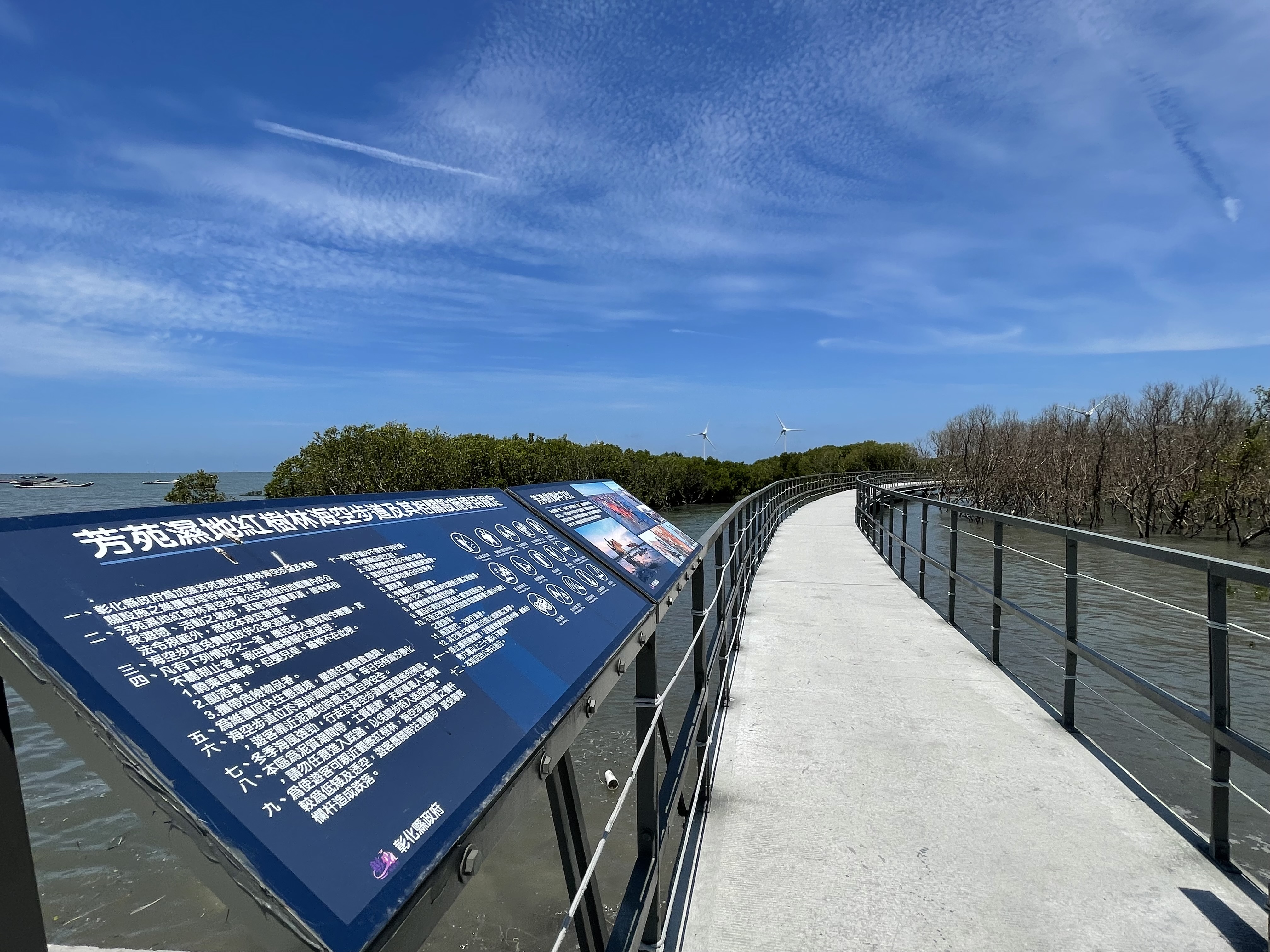
Fangyuan Wetland, Taiwan’s largest intertidal zone, nurtures a remarkably diverse ecosystem. The Fangyuan Wetland Walkway, a path that leads visitors deep into the muddy flats and mangrove forests for an immersive ecological experience. As the tide ebbs and flows, you can feel water ripple beneath your feet and catch captivating sights—fiddler crabs waving their oversized claws, mudskippers darting across the mud—creating the surreal sensation of "walking on water." This floating illusion has turned the Walkway into a signature attraction in southwestern Changhua.
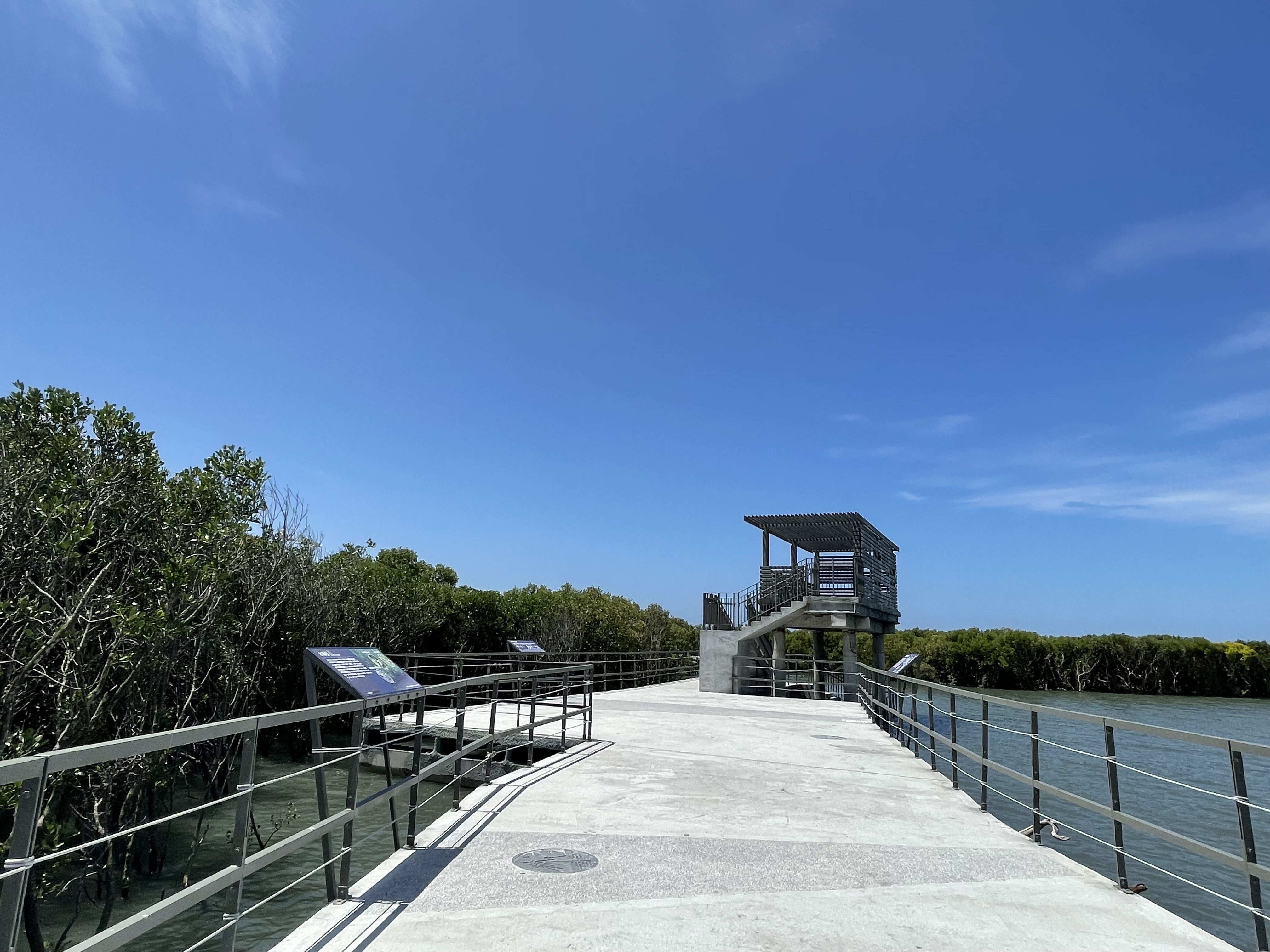
Unveiled in 2021, the Walkway masterfully blends the wetland’s rich ecology with local oxcart heritage. Stretching 1.3 kilometers, the walkway features sunset-viewing decks, birdwatching pavilions, and dedicated platforms for observing benthic life, and takes about an hour to traverse with three convenient entry points—North, Central, and South. The South Entrance offers excellent accessibility for all visitors. In addition to the free parking at the square of the nearby Fangyuan Putian Temple (普天宮), free parking is available under the bridge pier of the West Coast Expressway and at the roadside leading to Xihua Temple (西華宮).
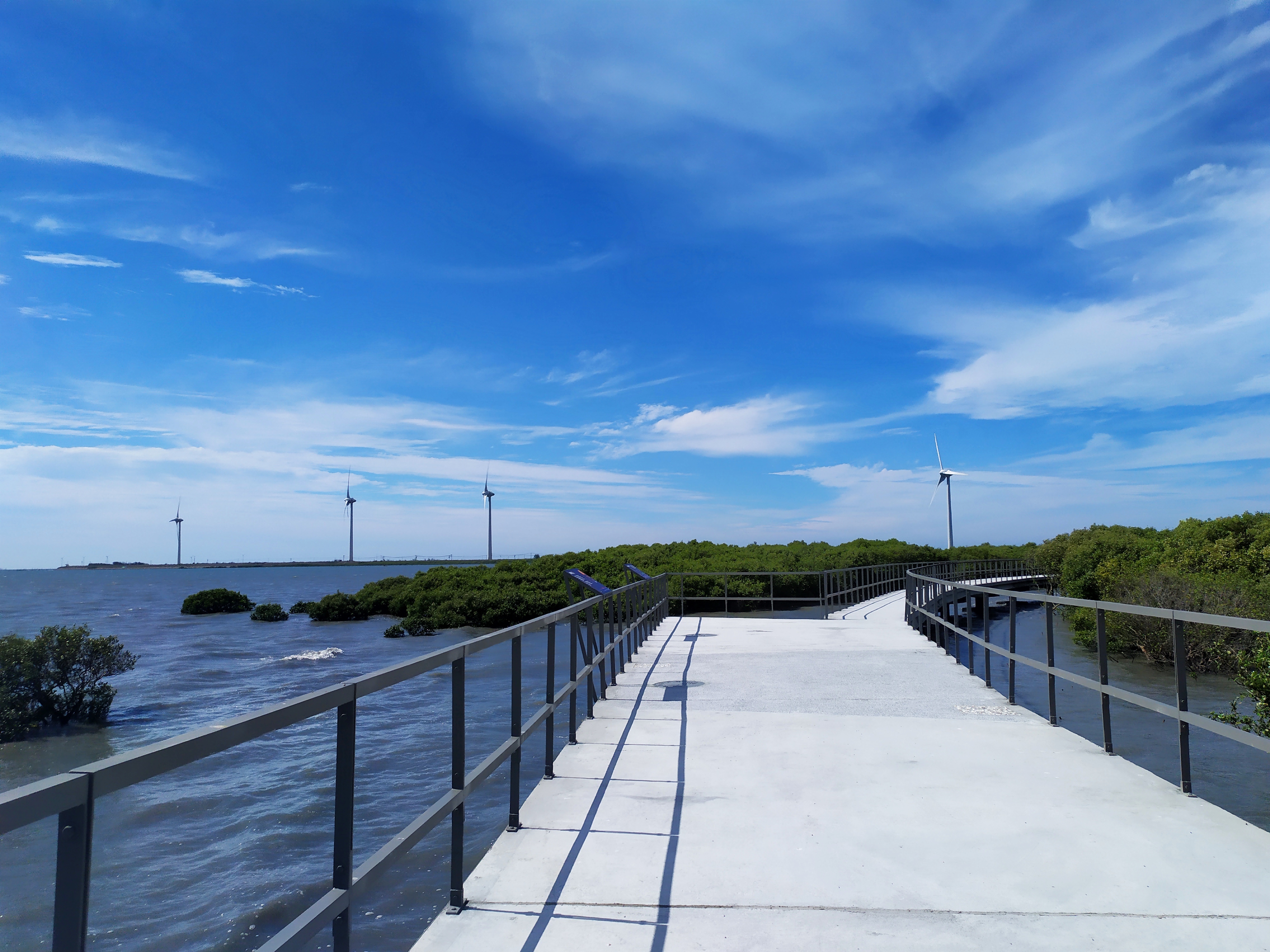
The Fangyuan mangrove forest spans nearly 30 hectares, primarily featuring black mangroves (Avicennia marina) and kandelia mangroves (Kandelia obovata). Black mangroves can grow up to eight meters tall and are known for its salt-excreting and drought-resistant properties. The dense fuzz on the underside of its leaves helps minimize water loss. It blooms between April and August, with fruit ripening from August to October. The pods resemble broad beans and fall into the mud upon maturation, drifting with the tides. Kandelia mangroves, on the other hand, exhibits viviparous reproduction. Its mature seedlings detach naturally and are capable of embedding upright into the mud—hence the name “水筆仔,” which likens the appearance to a pen poised in water.
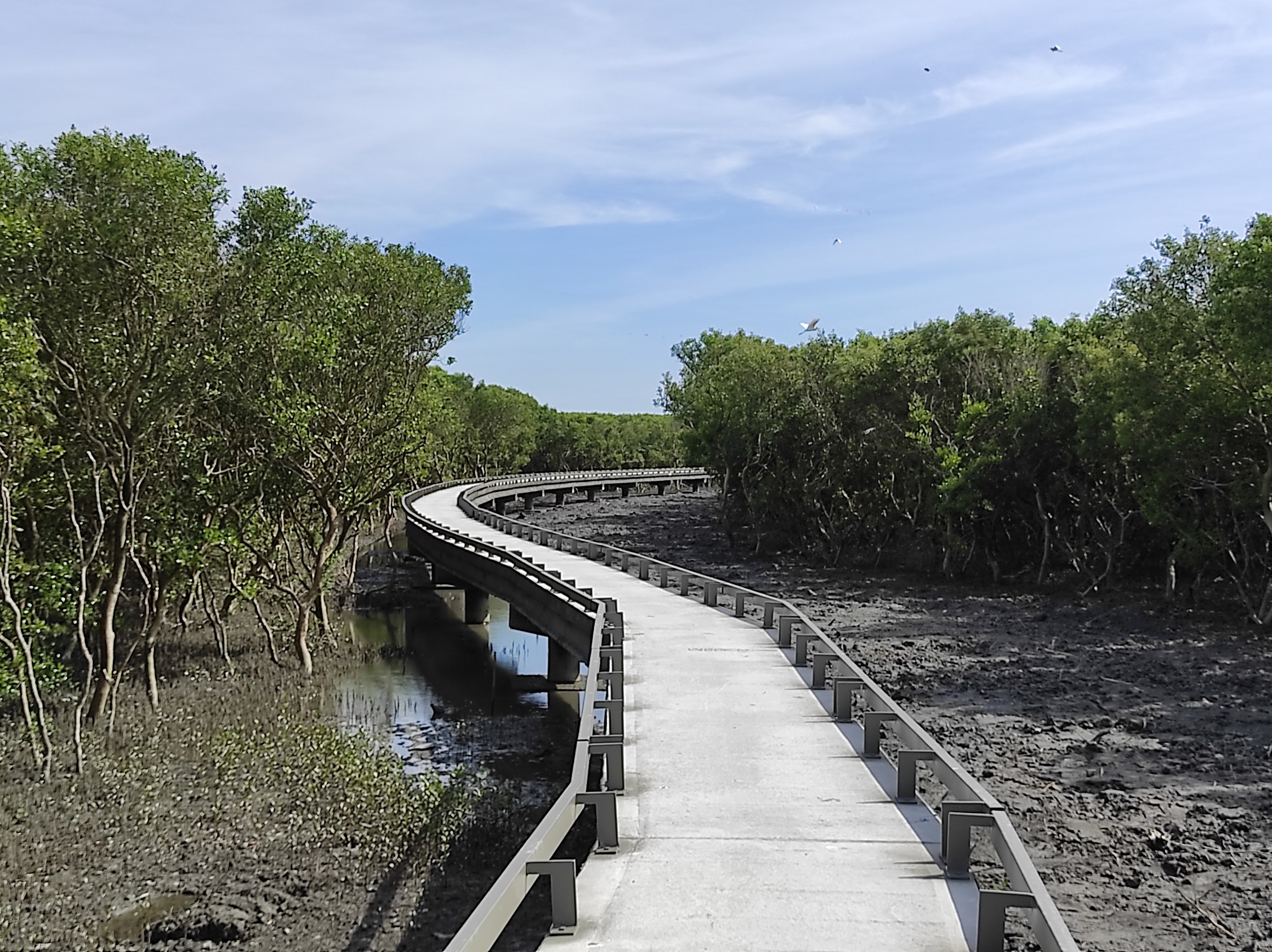
The Walkway offers a close-up view of diverse benthic life, including marine snails such as Ceriths and Turritella, as well as various crustaceans like grapsid crabs, sesarmid crabs, and hermit crabs.
In the mangrove soil, common invertebrates include polychaetes such as sipunculan and sandworms. Near the embankment, muddy tidal flats are home to species like Chinese Venus, Meretrix clams, and oyster drills. These are often harvested by local fishers and used in traditional cuisine.
This site serves as both a vital habitat and migratory stopover for birds.
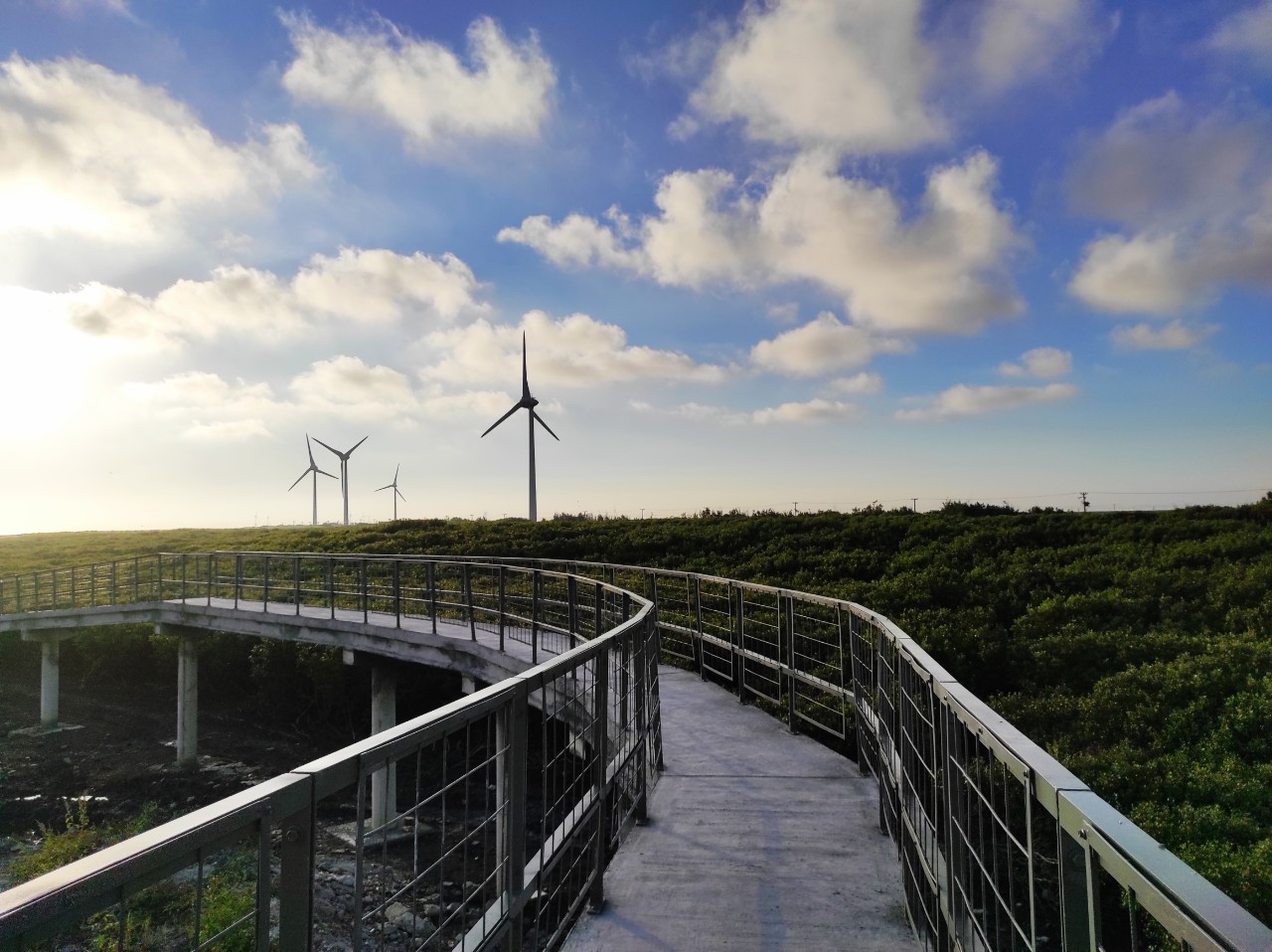
During the winter season, large flocks of waders—particularly species from the Scolopacidae family—gather on the tidal flats in search of food. Among them, up to 1,200 Eurasian curlews have been recorded. As the birds take flight, the spectacle resembles undulating waves—an awe-inspiring moment that leaves a lasting impression. Within the mangrove forest, herons dominate the scene, including little egrets, cattle egrets, and black-crowned night herons. From March through May, the breeding season offers glimpses of nesting behavior, as birds clutch twigs in their beaks and build nests among the branches.
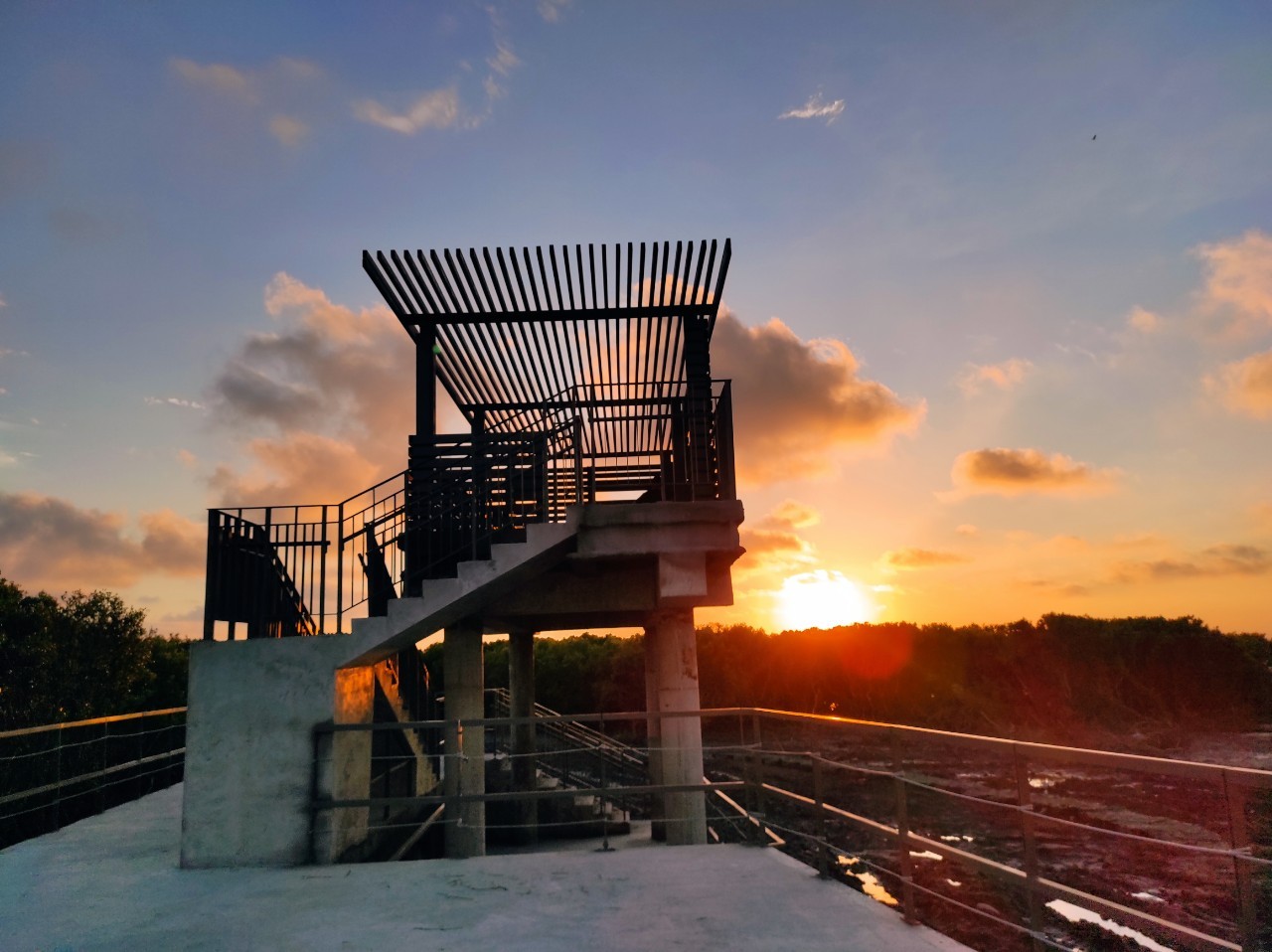
Venturing along the boardwalk allows close observation of tidal pools.
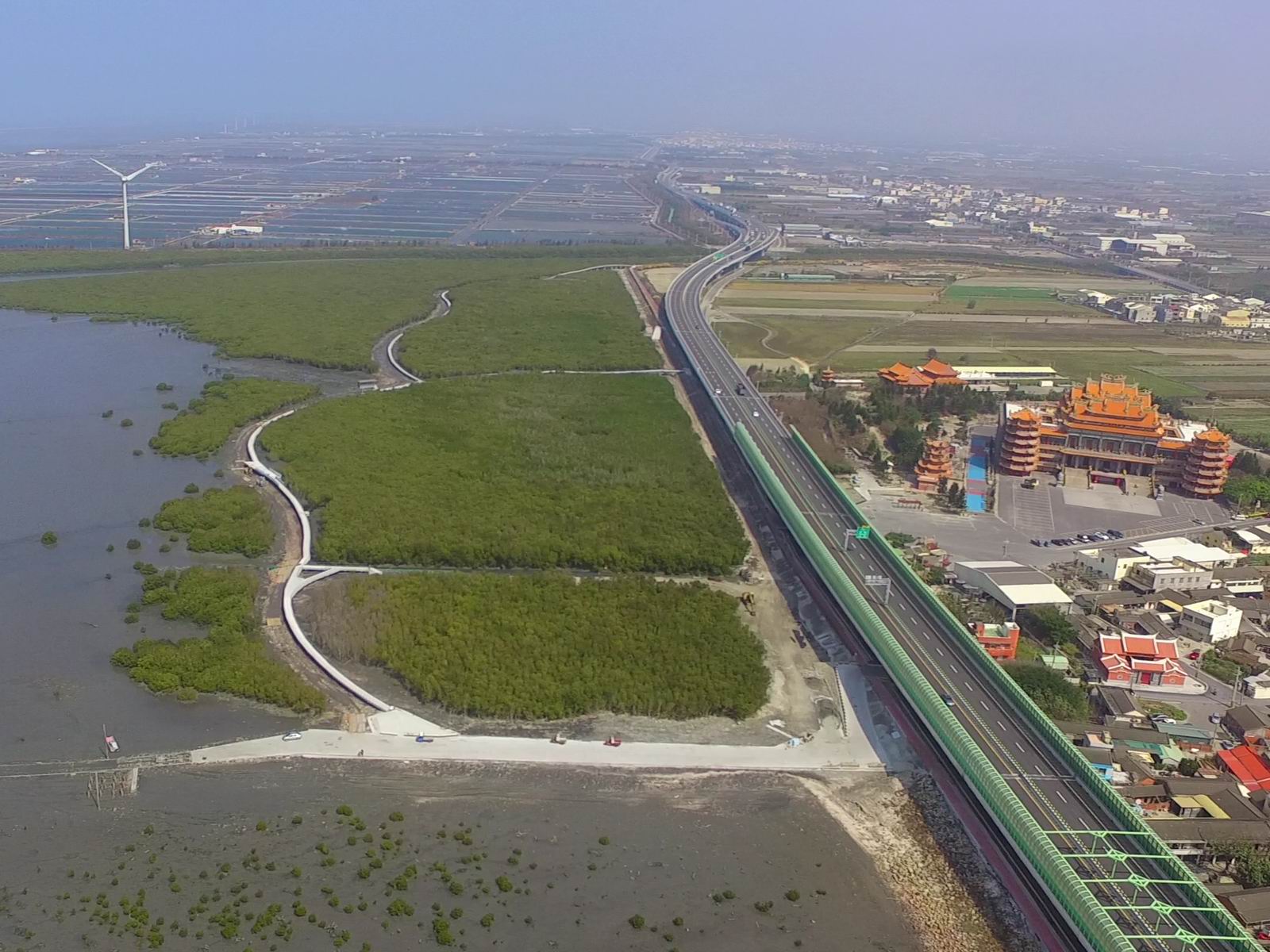
As the tide recedes, shallow pools remain—providing temporary refuge for marine life intolerant to desiccation. Observers may spot small fish and shrimp drifting back to sea with the tidal flow. The surrounding area also serves as a favored habitat for fiddler crabs and mudskippers. Stretching 5 to 6 kilometers, the expansive mudflats double as a stunning vantage point for sunsets. Basking in the golden light, the intertidal zone melds with the sky in ever-changing hues. In addition to the wind turbines dotting the shoreline, coastal activities—such as ox-drawn carts, iron ox carts (tractors) transporting oyster, oyster harvesters, and PVC rafts—create a distinctive coastal scene. Moreover, there are a wealth of captivating attractions perfect for visitors, including the Oil Learning House (油籽學堂), Wanggong Fishing Port, and Fangyuan Lighthouse. Around the square of Putian Temple, visitors can indulge in local snakes such as grilled oysters, oyster fritters (蚵嗲), peanut brittle, and traditional popsicles. On weekends, street vendors gather in lively numbers, making this locale a favored destination that weaves together natural beauty and cultural richness.



